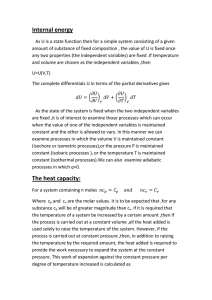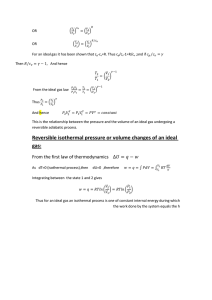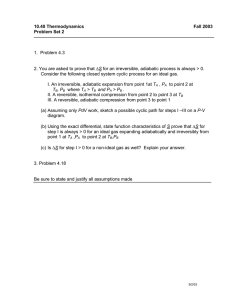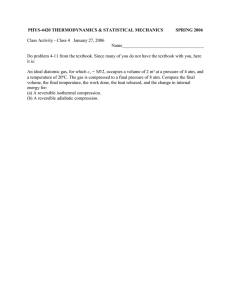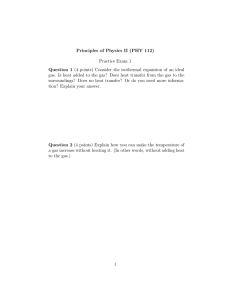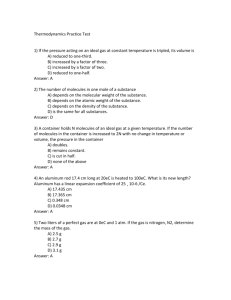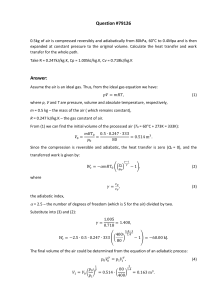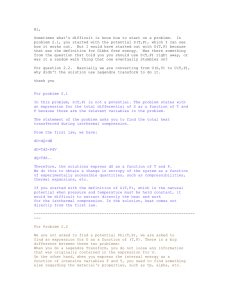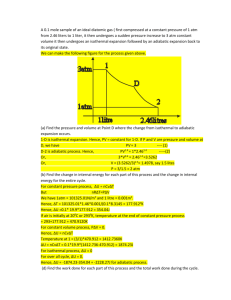Internal Energy ( ), Heat ( ), and Work ( )
advertisement
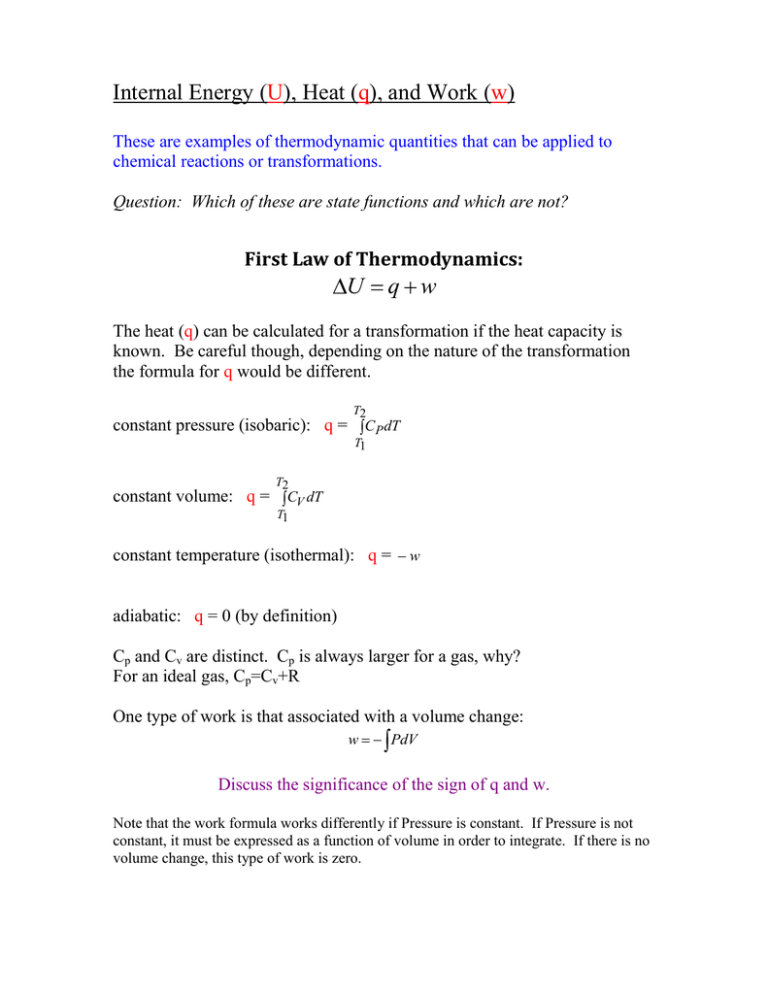
Internal Energy (U), Heat (q), and Work (w) These are examples of thermodynamic quantities that can be applied to chemical reactions or transformations. Question: Which of these are state functions and which are not? First Law of Thermodynamics: U q w The heat (q) can be calculated for a transformation if the heat capacity is known. Be careful though, depending on the nature of the transformation the formula for q would be different. T2 constant pressure (isobaric): q = C P dT T1 T2 constant volume: q = CV dT T1 constant temperature (isothermal): q = w adiabatic: q = 0 (by definition) Cp and Cv are distinct. Cp is always larger for a gas, why? For an ideal gas, Cp=Cv+R One type of work is that associated with a volume change: w PdV Discuss the significance of the sign of q and w. Note that the work formula works differently if Pressure is constant. If Pressure is not constant, it must be expressed as a function of volume in order to integrate. If there is no volume change, this type of work is zero. We will consider heat, work, and internal energy change for lots of different processes: o isothermal compression of an ideal gas o an ideal gas is heated at constant volume o constant pressure compression of an ideal gas o adiabatic expansion of an ideal gas o liquid helium evaporates (constant pressure phase change) o water is heated from 300 K to 310 K o a reaction confined to a steel vessel produces a gas o a reaction is performed at atmospheric pressure and produces a gas o water is condensed from a gas at 400 K to a liquid at 300 K Precise work requires consideration of temperature dependence. This can be expressed by how the heat capacity varies as a function of temperature. There are many different ways of expressing this dependence. One is a simple power series in T: C Po A(1) A(2)T A(3)T 2 A(4)T 3 see Engel and Reid for values Another is the following form: C o P a bT c T2 click here for data The NIST webbook uses an even more complicated formula: Cp° = A + B*t + C*t2 + D*t3 + E/t2 Here is a report written by Cody Chalker (YCP 2011) concerning the values of the heat capacity of water as found on the NIST tables.
